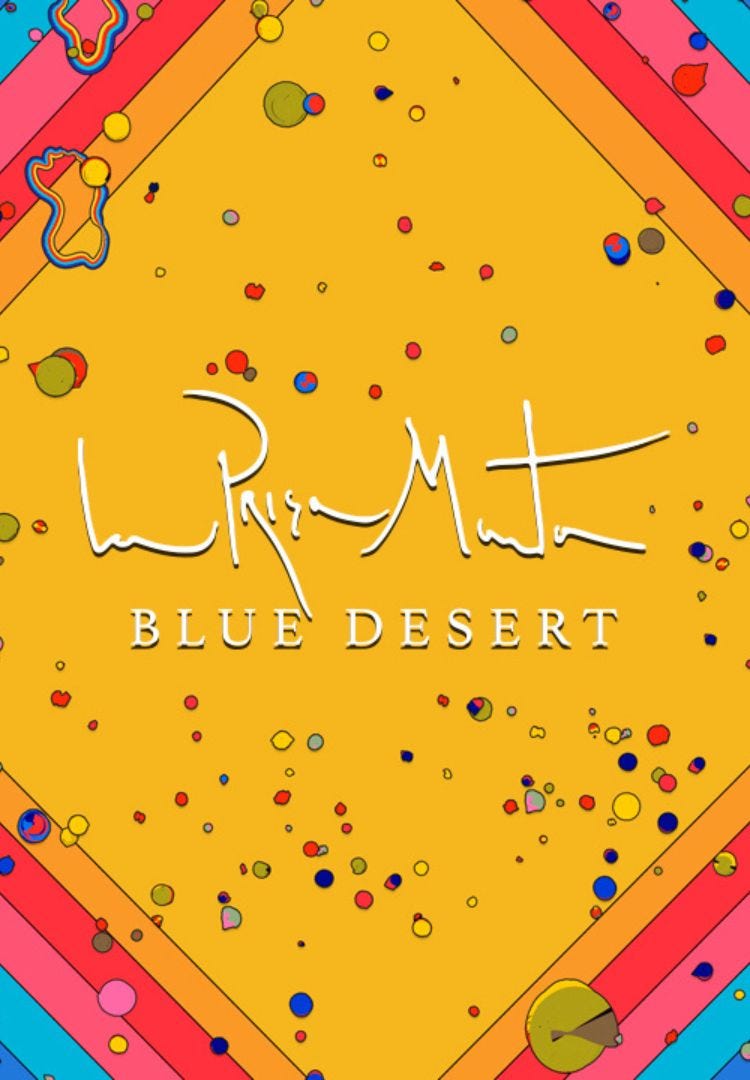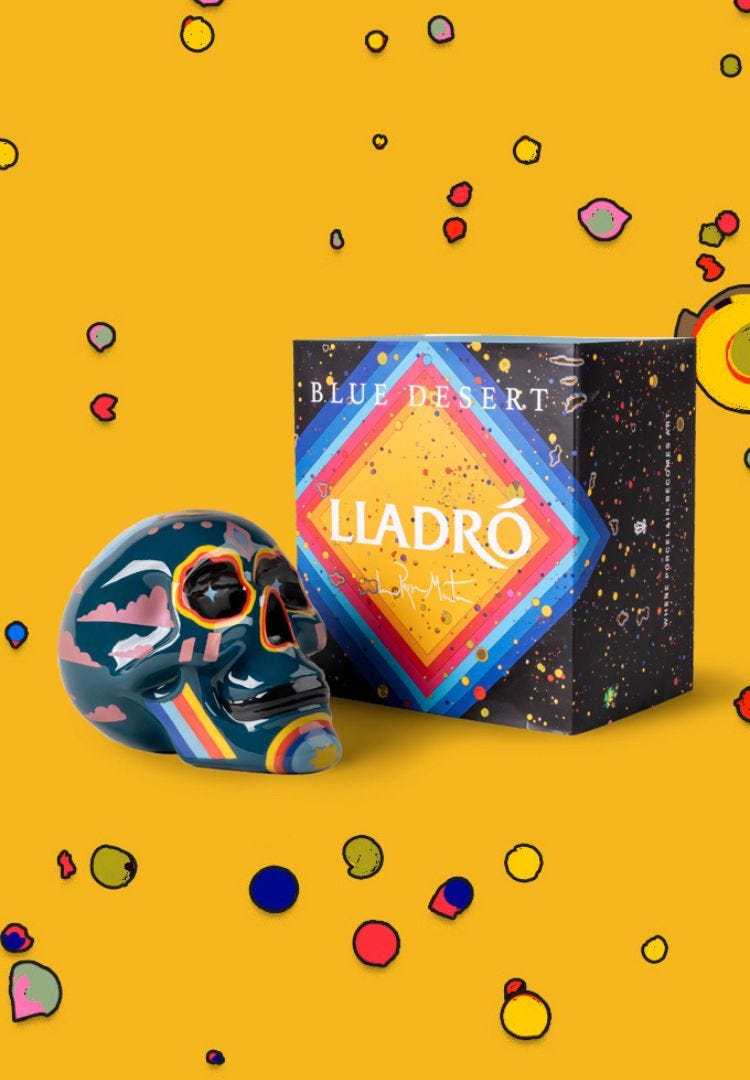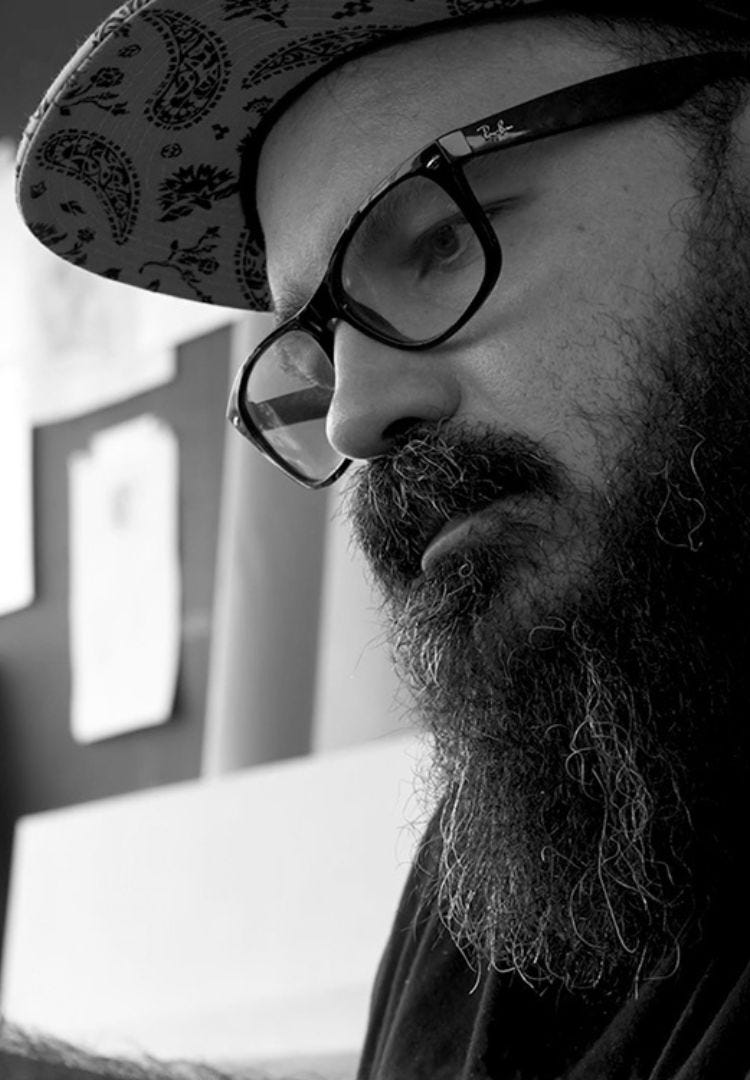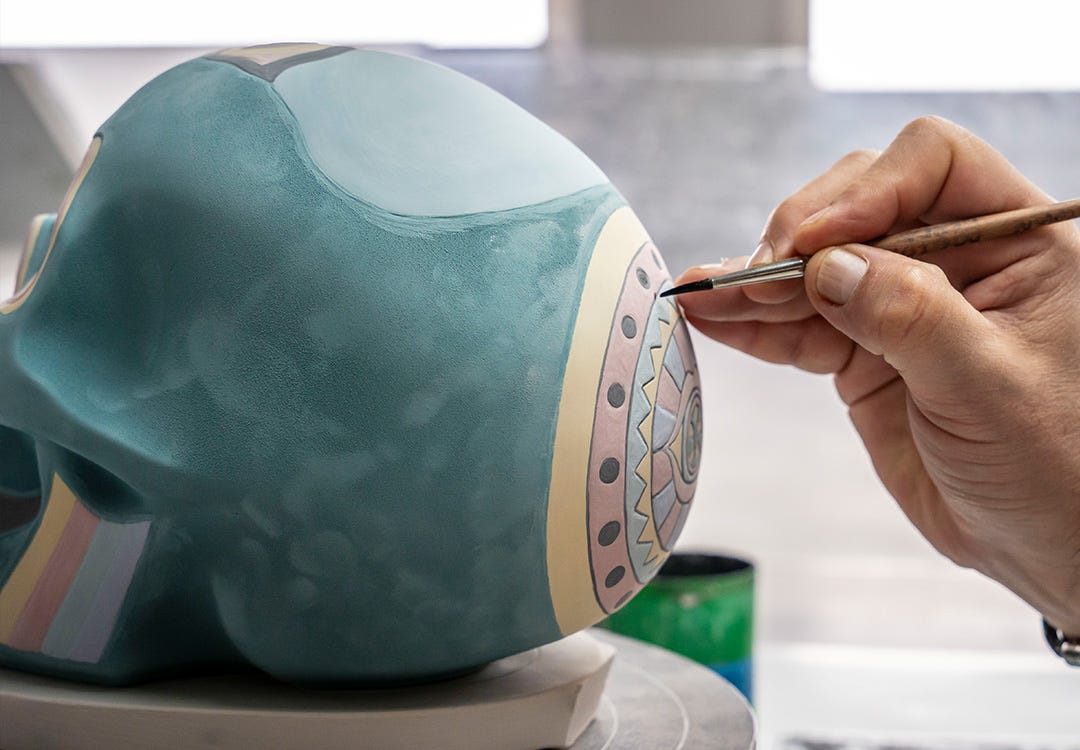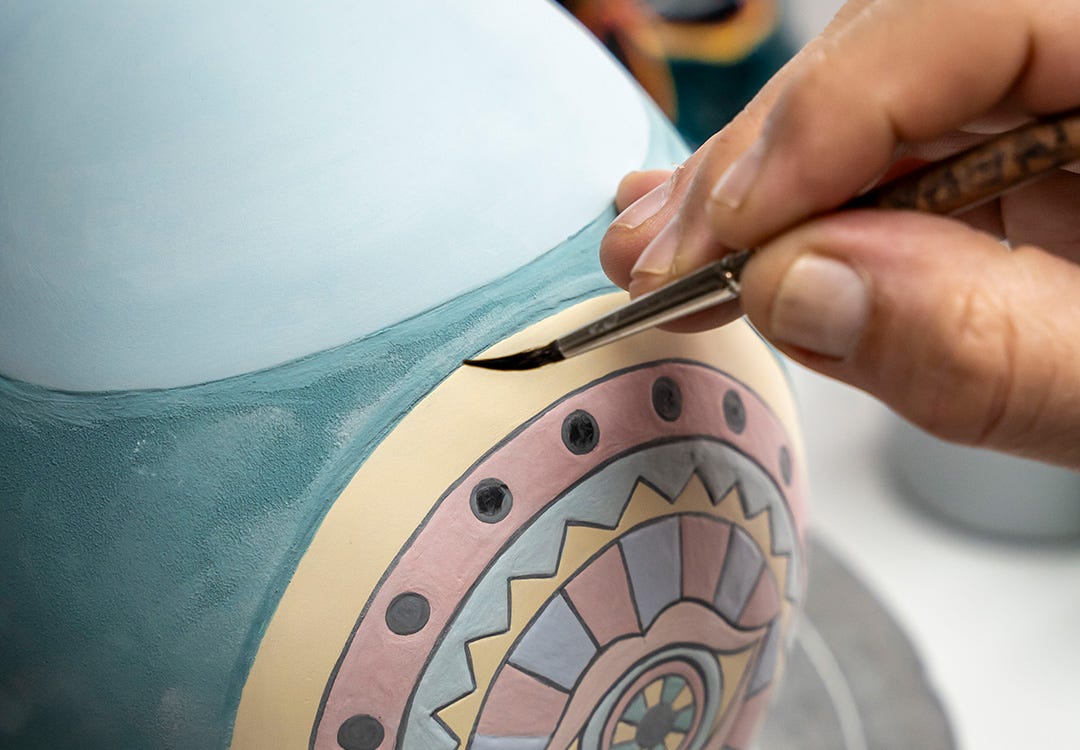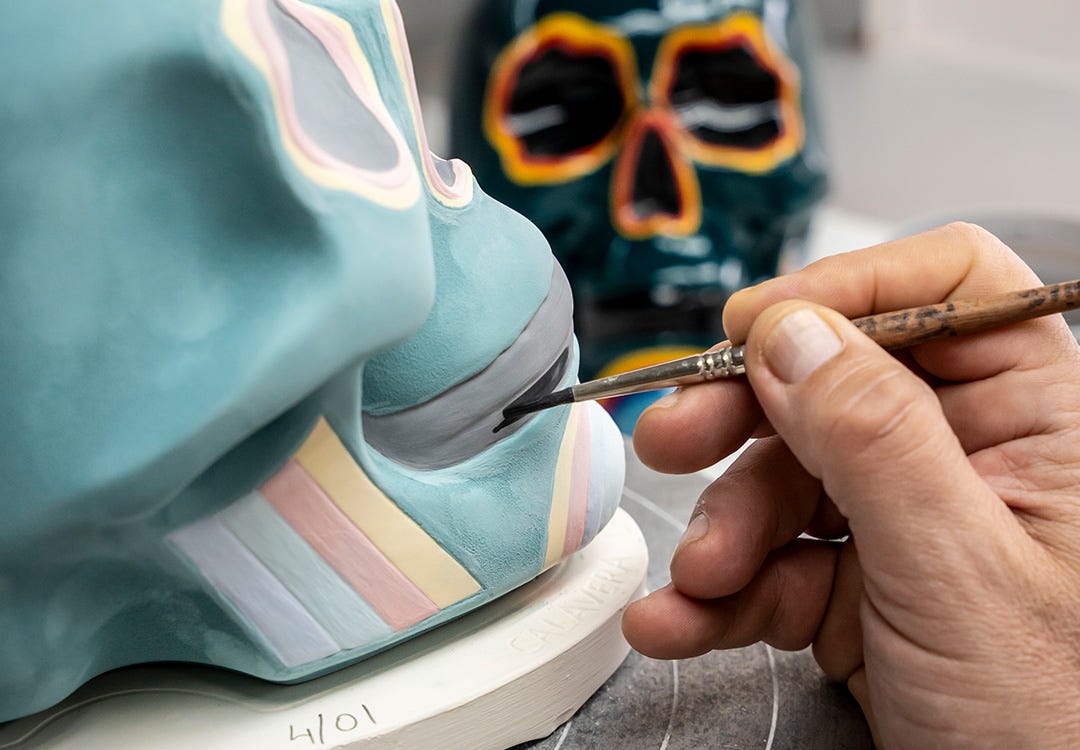Phygital art, a fascinating intersection between the physical and the digital, has recently emerged as a powerful contemporary medium. The Spanish artist Luis Toledo, also known as Laprisamata, has brought this expression to life with his Blue Desert, an innovative collaborative project with the iconic company Lladró. This work, consisting of 70 digital illustrations in NFT format and 70 meticulously handcrafted porcelain skulls, is testimony to Toledo’s vibrant imagination and conceptual depth.
What led you to combine elements from different cultures and sacred art in your work?
My work has always been based on the symbology of distinct cultures and my interest in art history, especially sacred art from different places around the world. I unify these elements and symbols, through my own Mediterranean vision, to create a global and universal art.
How did the collaboration with Lladró come about, and what aspects of its handcrafted focus attracted you?
When the idea of collaborating with Lladró was first broached, I was struck by the fact that they are equally as passionate about detail as I am, and I saw it as a connection between my world and theirs. The search for new ornamentation and the use of materials to tell stories that, at first sight, are not straight-forward.
You have travelled all over the world exhibiting your work. How has the emergence of digital collecting changed that experience?
Thanks to the rise in new digital collecting over recent years I have been able to travel all around the world showing my work. I have seen my pieces on a giant screen in Times Square and in galleries in Berlin or India, I have collectors in Pakistan and in loads of countries I would never have dreamed of.
In Blue Desert, you combine surreal and dreamlike elements from different cultures. How do you manage to find a balance in this fusion of styles?
There are dreamlike and surreal elements in all the illustrations, like for instance tiny insects or ornamental patterns from India fused with the agave plant from Mexico. I have tried to mix all the styles and to integrate everything from Pop art to sacred art. The mix of Western and Eastern elements is basic in achieving a concept of universality. My goal is to create a dialogue between different parts of the world and to invite people to discover the connections between cultures.
Why did you choose the skull as the core element in Blue Desert?
We chose the skull as something that unites all cultures, given that death is a concern that has always been with us down through history. But we wanted to represent it as a symbol with a lot of life.
What meaning do you give to the symbolic elements in the physical work, like the starry sky and the third eye in the mouth?
When collectors acquire one of these digital works they also receive the physical work, a skull decorated with a starry sky, reminiscent of the ones used in Egyptian sarcophagi as a symbol of eternity, as well as a mandala or a third eye as a gateway to spirituality.
